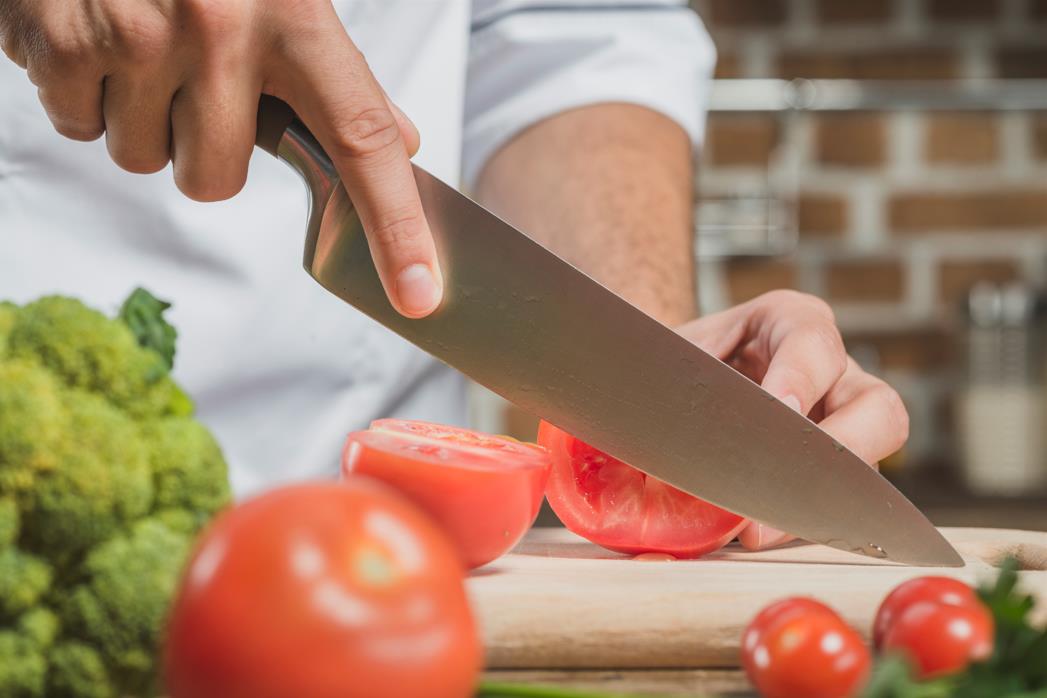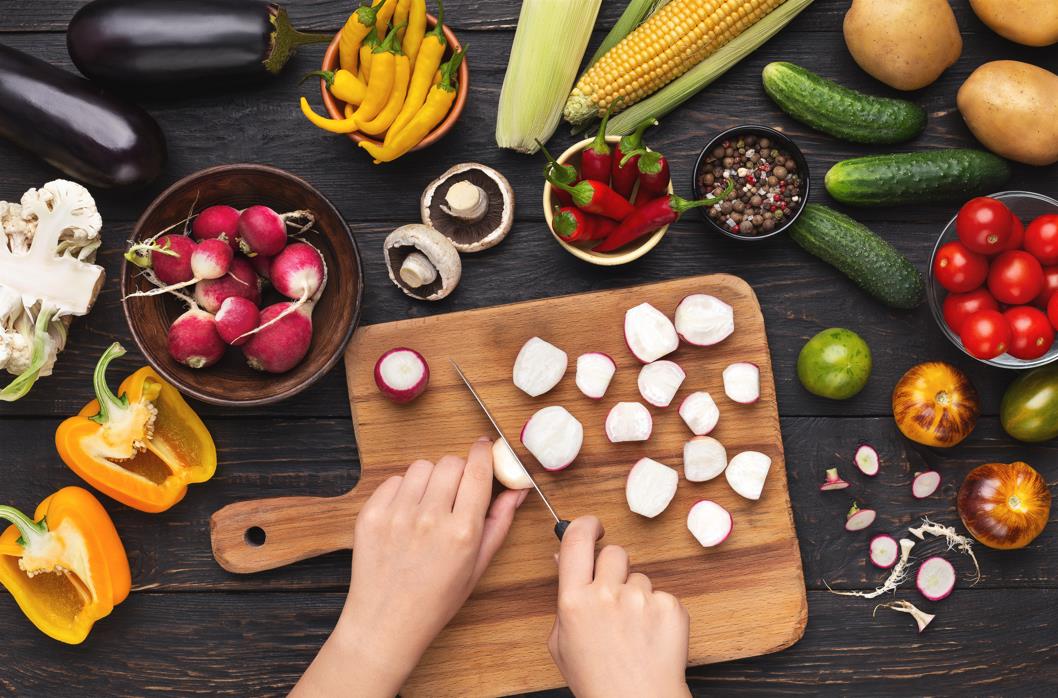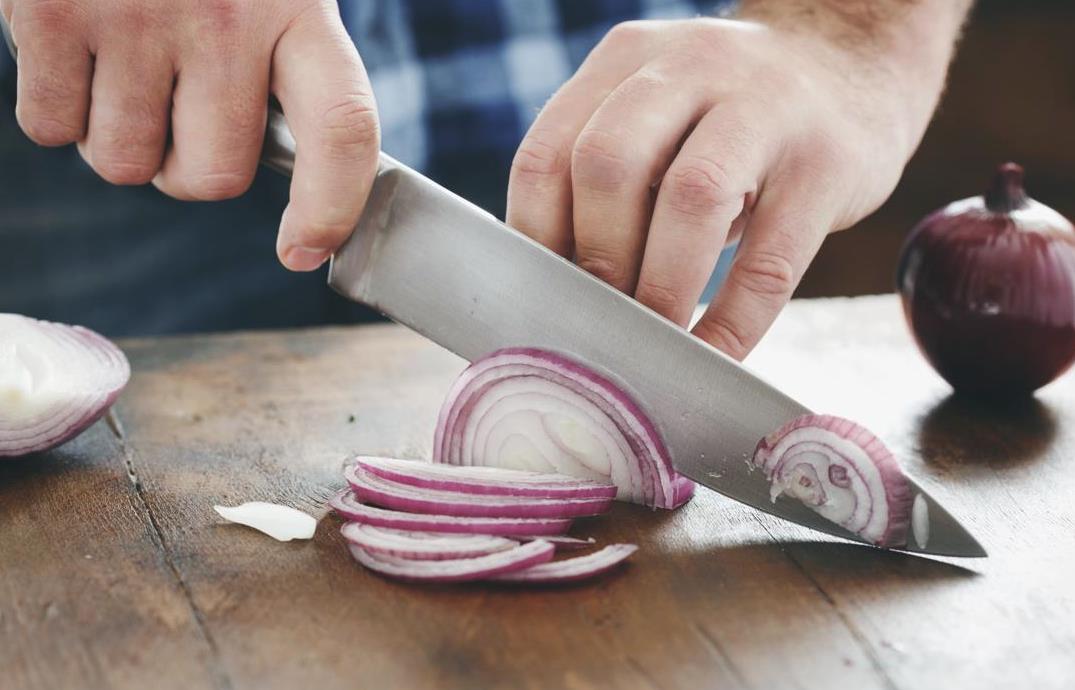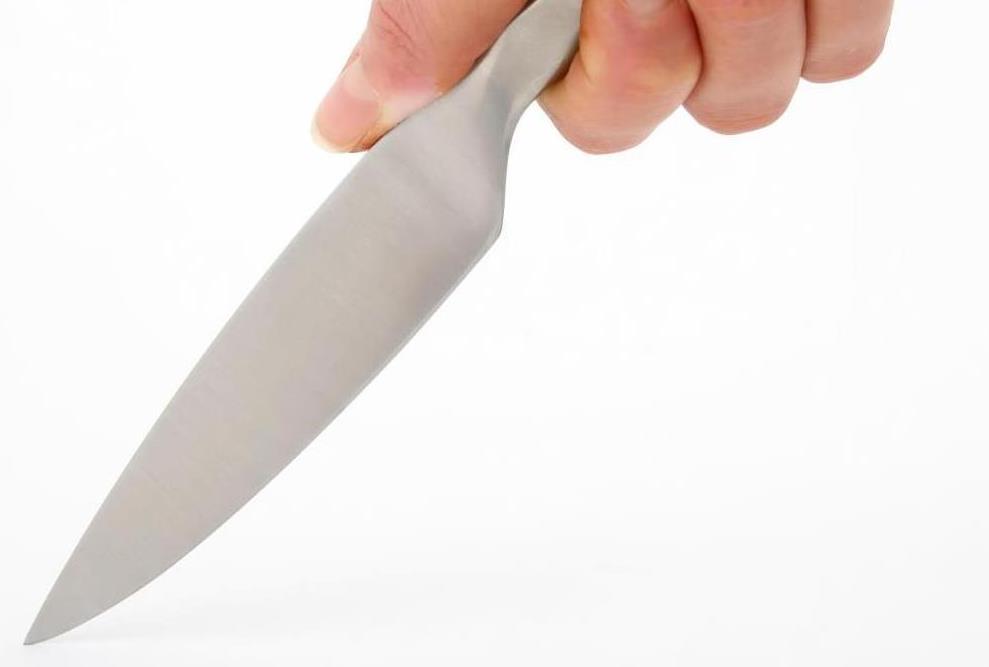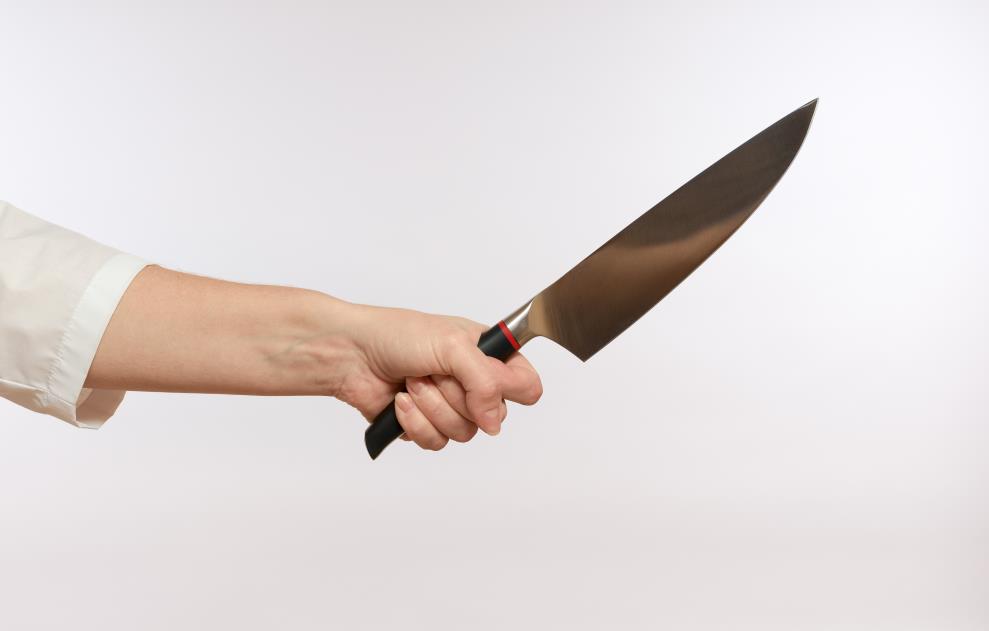From chopping vegetables to slicing meat, kitchen knives play a crucial role in the culinary arts. A knife that can’t stand chopping through meats or vegetables or can’t cut cleanly through bread and pastries is essentially useless in the kitchen. However, when it comes to choosing the right knife for any job in the kitchen, there is no one-size-fits-all solution.
The three most essential knives every kitchen must have are a chef’s knife, paring knife, and serrated knife. While the three knives are different in purpose, they ensure a cook can handle any task in the kitchen. The chef’s knife is ideal for slicing, chopping, mincing, and disjointing meats; the paring knife is for cutting fruits and vegetables, and the serrated knife works best for cutting bread and pastries.
This post will cover all you need to know about essential kitchen knives. You’ll also learn what to consider when choosing a kitchen knife and other essential kitchen appliances.
Table of contents
What are the essential kitchen knives?
The three most essential knives every kitchen must have are:
- A chef knife
- Paring or utility knife
- Serrated knife
Chef knife
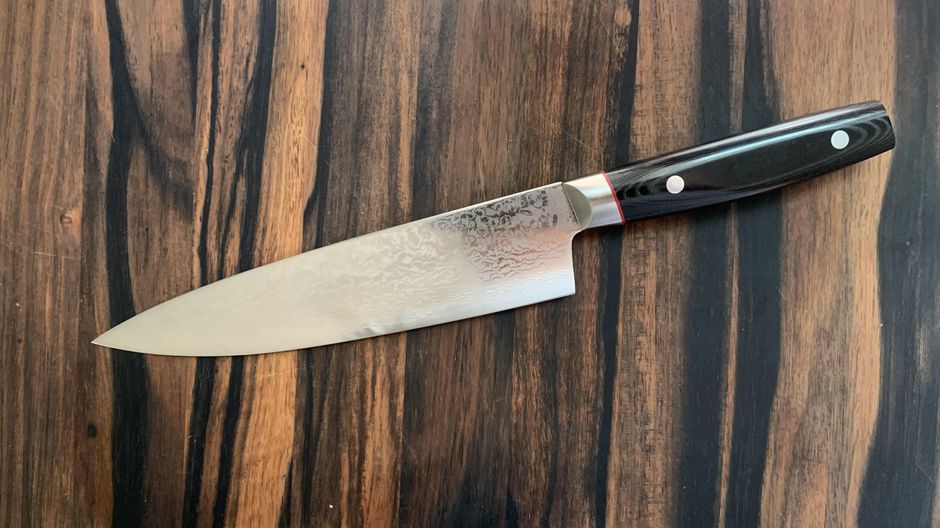
A chef’s knife is a cutting tool with a broad blade that tapers to a point. It’s wider towards the heel and narrows at the tip, which allows for precision cuts and easy rocking. The knife measures between 6-12 inches long, with eight inches being the most common length. Longer blades provide a more stable cutting surface, while shorter blades can help with precision cuts.
Some manufacturers use stainless steel for the blade, but most chefs recommend using high carbon stainless steel because it has a higher rust resistance. When looking for the best chef’s knife, you should also ensure the handle is comfortable to hold and durable enough to withstand years of use.
Chef knives come in two major styles:
- Western-style: Western chef knives have blades sharpened on both sides. They are much heavier and thicker, making them ideal for chopping through meats and dicing, but they aren’t as sharp.
- Japanese knives: Japanese knives have blades sharpened on one side. They are lighter and have a thinner blade that’s ideal for slicing.
Uses of a chef’s knife
The feature characteristics of a chef’s knife allow for various uses. The curved blade allows the chef to rock the knife back and forth while still maintaining a flat surface on which to slice. The sharp tip lets the chef get into small spaces, while the knife’s heel provides power for chopping.
Chefs use it to slice, cut, chop, dice, mince, and disjoint meat. Its versatility makes it one of the essential knives every kitchen must-have. While you can use a chef’s knife for smaller jobs, such as peeling and slicing fruit or vegetables, you shouldn’t use it to cut bone because you could damage the blade.
Paring/utility knife
A paring knife is a chef’s most indispensable tool. It’s short, measuring around 3-5 inches, with a thin blade that tapers from the handle to the tip. The narrow blade is sharp enough to cut through vegetables and fruits but small enough to peel delicate foods.
Paring knives are handier than chef’s knives because of their small size, but they’re more delicate. An average paring knife will cost around $12, with more expensive models providing higher-quality blades. One designed with high carbon stainless steel with a full tang offers more durability and balance.
Paring knives come in four different blade styles:
- Bird’s beak paring knife: This knife features a sickle-shaped blade with a very sharp tip. It’s ideal for trimming, coring, peeling, and other delicate activities.
- Spear Point paring knife: Also known as a classic paring knife, the spear point paring knife is short with a blade that curves outwards. It’s ideal for slicing and coring fruits and vegetables.
- Western-style Japanese paring knife: The Western-style Japanese paring knife is small with a less curved steel blade. The thin, stiff blade is best for carving, decorative garnishing, and intricate cutting.
- Sheep’s foot paring knife: This paring knife features a straight blade with a rounded tip. It’s smooth and flat, making it ideal for julienne cutting.
Uses of a paring knife
A paring knife is best suited for small, intricate tasks. Its small size and thin blade make it ideal for peeling, trimming, coring, pitting, hulling, and other delicate cutting jobs. The small size can also help with detailed garnish and carving.
Serrated knife
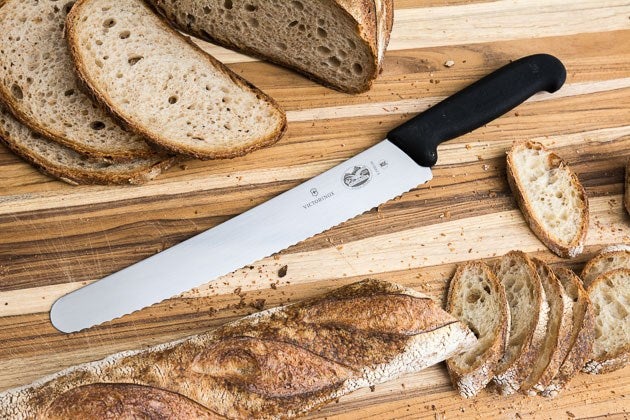
A serrated knife is a bread knife that has saw-like blades along the cutting edge. The scalloped tooth-like blades are ideal for cutting foods with tough exteriors such as bread crust, soft crust, and cakes. The teeth aren’t sharp but cut into the food by sawing back and forth.
An ideal serrated knife measures between 8-9 inches, with the blade made of high carbon stainless steel. An ergonomic handle is vital because a serrated knife requires more hand strength.
Uses of a serrated knife
Serrated knives are great for cutting bread, tomatoes, and other fruits and vegetables with tough exteriors. Bakers use it to cut cakes, pastry, and soft bread. The serrated edge easily saws through the food, making it ideal for cutting without smashing or tearing.
Avoid using serrated knives to chop hard objects such as bones. The jagged edge could break or chip, ruining the knife’s cutting efficiency. Moreover, it’s only ideal for cutting smaller foods. The serrated blade will have a harder time cutting through large food items such as a turkey or roast.
Handpicked for you
True cutting power in the palm of your hand
What to consider when choosing a knife
When choosing a knife, consider how you intend to use the knife. A paring knife is ideal if you wish to cut smaller foods such as vegetables. But if slicing meats and bread are your forte, you should invest in a serrated bread knife or chef’s knife. You should also look for a knife that’s durable, versatile, and comfortable to use.
Here are some of the most important factors to consider when shopping for a knife:
Knife performance
Consider how well the knife cuts through different types of food. It should be able to slice with ease without leaving ripped or jagged edges. The blade should also be sharp and resilient enough to cut through tough surfaces like frozen meats and hard cheese.
Stainless Steel blades stay sharp longer, but high carbon stainless steel knives are highly durable and resistant to staining. A stain-resistant knife will not rust or change color when exposed to acidic foods. Essentially, you want a knife that’s easy to clean, has a smooth cutting blade, and will stay sharp for longer.
Maintenance
A knife that’s easy to maintain is a great investment. Knife maintenance involves cleaning, drying, and storing the blade. Cleaning a knife requires washing it with soap and water to remove food particles from the surface. Drying the knife ensures that excess moisture won’t breed bacteria, cause rusting, or affect the knife’s cutting edge.
Look for a knife that doesn’t need extensive maintenance and blade sharpening. For instance, ceramic knives aren’t as durable as metal blades but require minimal maintenance. The knife should have an ergonomic handle for effortless cleaning and a slip-resistant grip.
Your culinary needs
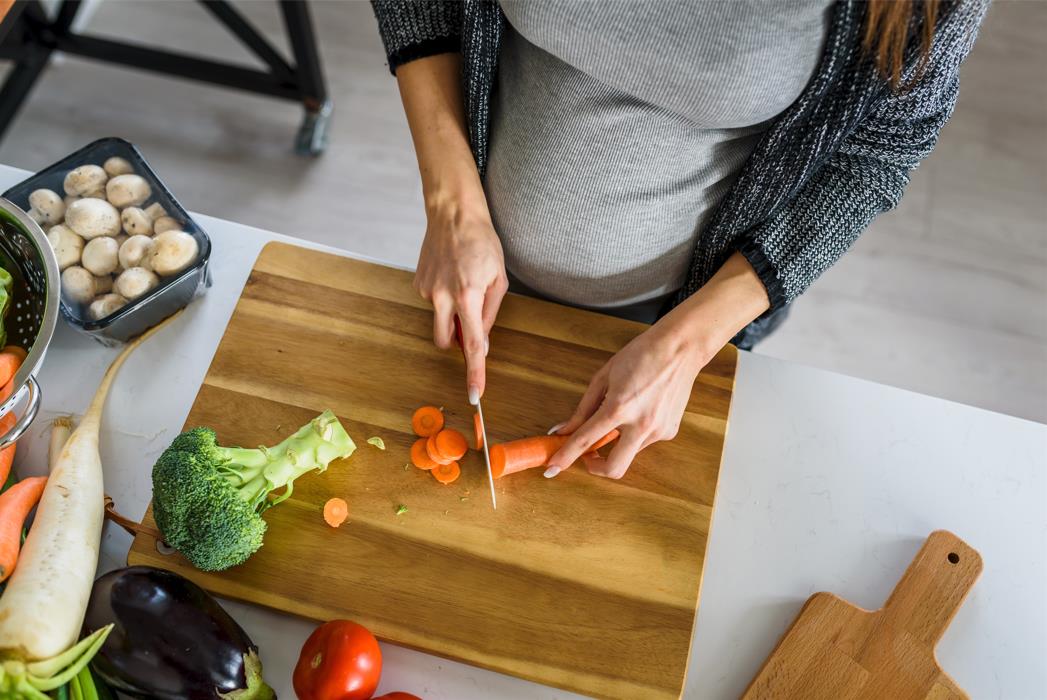
Consider what you’ll be using the knife for. A chef’s knife will serve the average kitchen cook, but if your culinary needs are more extensive, invest in a complete set of knives. For instance, if you’ll be doing a lot of cutting and chopping, invest in a chef’s knife.
If you use a knife for delicate and precise tasks, such as peeling fruits and vegetables, invest in a paring knife. A carving knife will make the job of cutting meats easier. A bread knife is great for slicing softer foods such as cakes or bread rolls.
Other knife types such as boning, fillet, santoku, cleaver, and carving fork are also great for specific cutting tasks. Invest in the correct type of knives that will enhance your cooking experience. You can either choose to invest in a complete set of knives or start with just one or two knives if you don’t plan on doing extensive cooking tasks yet.
Nice to have knives
Some knife types are not as important as the essential kitchen knives, but they can still be beneficial. Below are some examples:
Boning knife
A boning knife is a long, narrow blade ideal for removing meat from the bone. It is usually thinner than a chef’s knife and has a slightly flexible blade to cut close to the bone. You can also use a boning knife to fillet fish and slice smaller meats such as chicken breasts or turkey cutlets.
It’s strong and rigid with a sharp edge that curves upwards as it tapers to the tip. The knife is lightweight enough to maneuver quickly and is usually between five and six inches long.
Filleting knife
A filleting knife is usually five to twelve inches long. It is razor-sharp, flexible, and narrow with a blade that tapers from the handle to the tip. A filleting knife is typically thin to slice through the skin, scales, and bones of a fish. It may appear similar to a boning knife, but it’s more flexible with a very sharp tip.
Santoku knives
Santoku knives or bocho knives are Japanese-style knives commonly used for cutting, dicing, and mincing. This knife is usually heavier, shorter, and thicker than Western-style knives. They feature tapered blades with drop points that allow for precise cutting.
The santoku knife has a slightly curved edge with the spine curved downwards towards the tip. The drop point tip ensures a deeper cut and a smooth slicing motion without tearing or sawing. The knife is well balanced, with the weight distributed evenly along its length.
Nakiri knives
Nakiri knives are Japanese knives with a straight edge, rather than curved like the santoku. They feature a flat blade with a flat edge. Nakiri knives are best suited to chopping vegetables such as cucumber, carrots, celery, and daikon.
They’re also great for slicing soft vegetables such as tomatoes or peaches without tearing or squashing them. The best nakiri knives are usually made of carbon steel. Although nakiri blades are thin, they’re strong and resistant to breakage.
Salmon knife
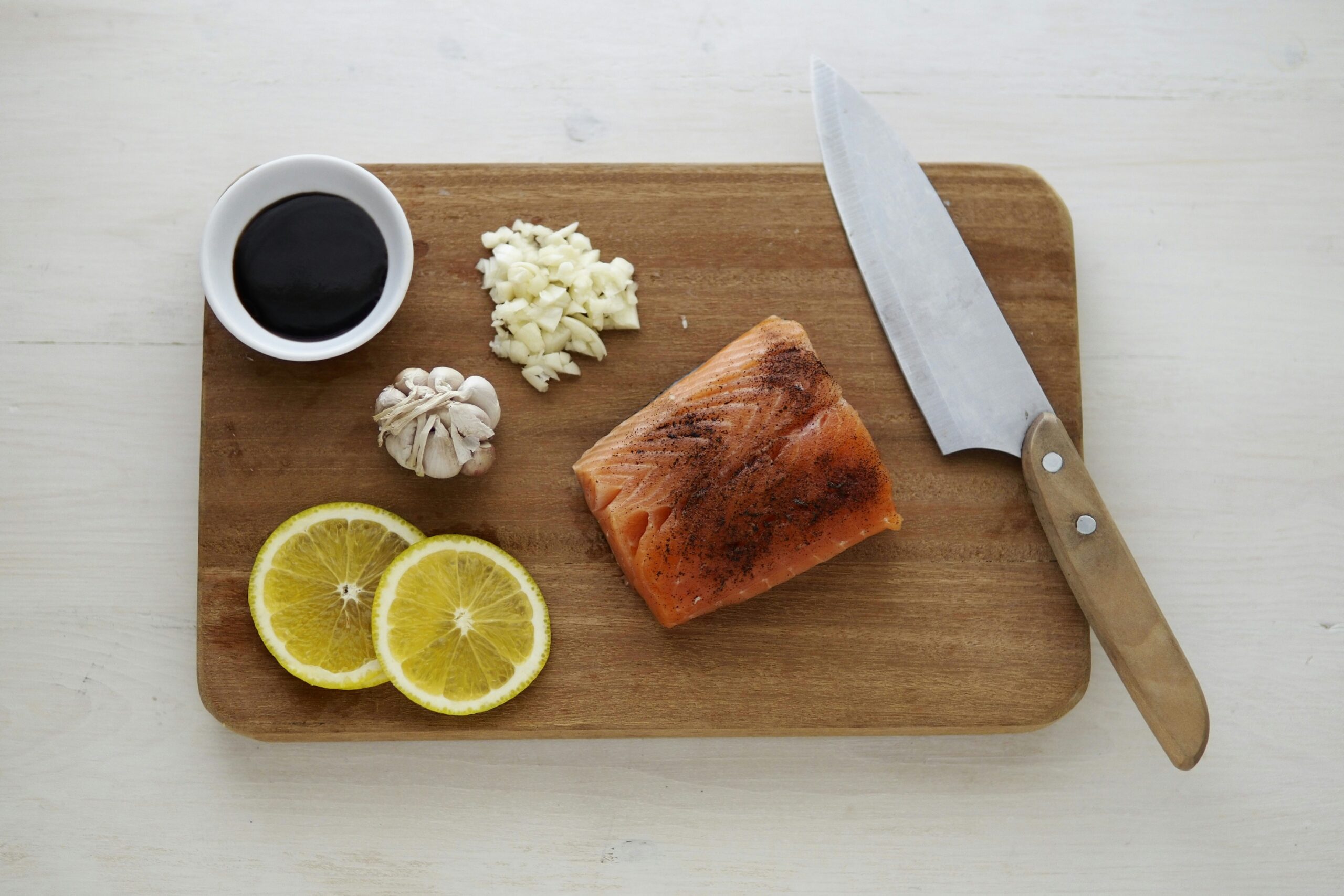
Fishmongers and sushi chefs use a special type of knife called a salmon knife to carve thin slices of large fish. The knife’s blade is long and thin, with no curves or serrations, similar to a fish filleting knife. Some designs may have slight indentations along the cutting edge.
Their slender blades are perfect for slicing long, thin fish slices without tearing the delicate flesh. Chefs use the knife to slice through fish while keeping the slices intact and reducing damage.
Other kitchen essentials
Apart from knives, other kitchen essentials help you become a better cook. Some of these essential kitchen items are:
Cutting board
A cutting board protects the countertops from damage when chopping, mincing, or slicing. It also protects your hand when you’re using a sharp knife. Cutting boards can either be plastic, wooden, bamboo, or glass.
Most chefs recommend wooden cutting boards since they’re more durable than plastic alternatives. When choosing the right wood for a cutting board, ensure it’s water-resistant, is easy to maintain, and has the aesthetics you want.
Knife storage
Knife storage protects your knives by preventing damage and dulling. When you store knives in drawers, ensure they’re sharp side up to maintain their cutting edge. It’s best to use a rack or case for storage, but if you only have space for one or two knives, it is okay to store them in the drawer.
The best knife storage solutions are sturdy and space-efficient. Ensure there is a safe way to remove your knives from the storage without causing damage or injury. You can use a magnetic strip or knife rack if you want easy access.
Kitchen shears
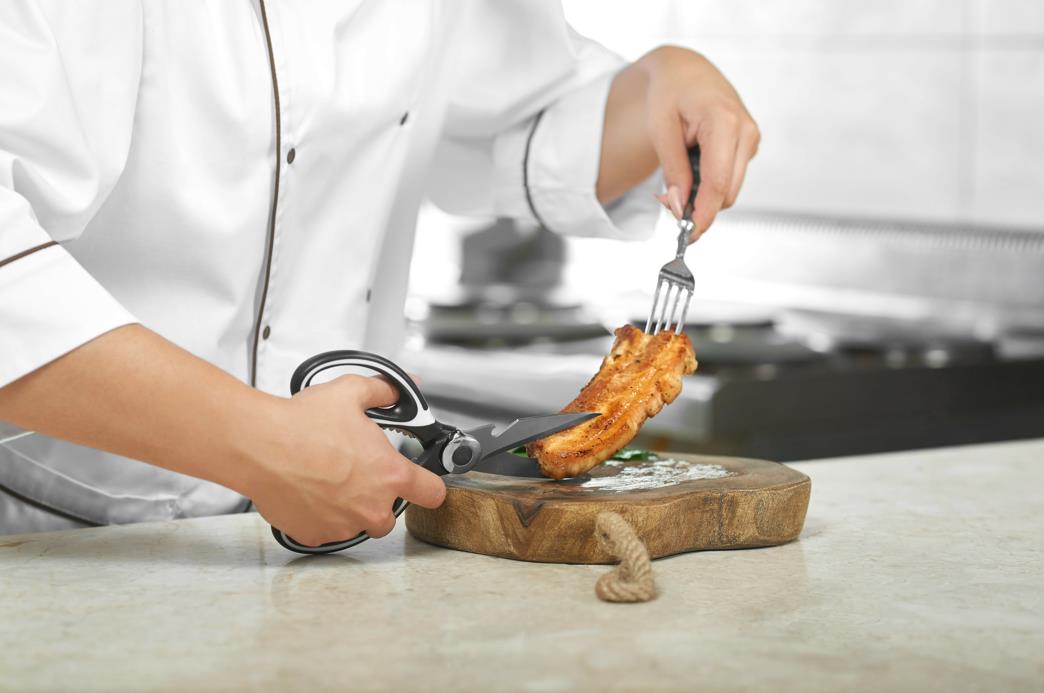
Kitchen shears are either scissor or clamp-style shears that are versatile in the kitchen. Kitchen shears come in different sizes and styles, but most have strong blades to cut tough ingredients with ease.
You can use kitchen shears for tasks like cutting open food packaging, snipping herbs, removing poultry joints, deboning meat, and cutting pizza or pastry dough. The ideal kitchen shears have an ergonomic handle with a blade cover for safety. Those that come with a bottle opener, nutcracker, and screwdriver can also be handy.
Essential kitchen knives FAQs
What three knives are essential to a kitchen?
The three most essential and essential knives for a kitchen are the chef’s knife, serrated knife, and paring knife. The knives are versatile, sharp, and designed to suit the most essential of your cutting needs. Having the three knives in your kitchen set ensures you can chop, slice, or cut any ingredient with ease.
What is the most versatile kitchen knife?
The most versatile kitchen knife is the chef’s knife. It’s a general-purpose knife with a strong and sharp blade. Chef’s knives come in different sizes and shapes, so ensure you choose one that suits your cutting needs. Chef’s knives come with a straight blade, offset handle, double-beveled edge, and Japanese design.
Do stainless steel knives stay sharp?
When sharpened stainless steel becomes very sharp, they contain different alloys for strength and durability. If you maintain and sharpen your knife regularly, it will stay sharp for a long time.
Closing
Essential kitchen knives make cooking easier and more efficient. Apart from kitchen essentials, you need to know the best way to maintain and store your knives for safety and effectiveness. The three most essential knives in a kitchen are chef’s, serrated, and paring knives. Each has its purpose, so if you’re looking for optimal sharpness, flexibility, and quality, invest in high-quality knives.
Visit our store for high-quality kitchen knives that will change your cooking experiences.








